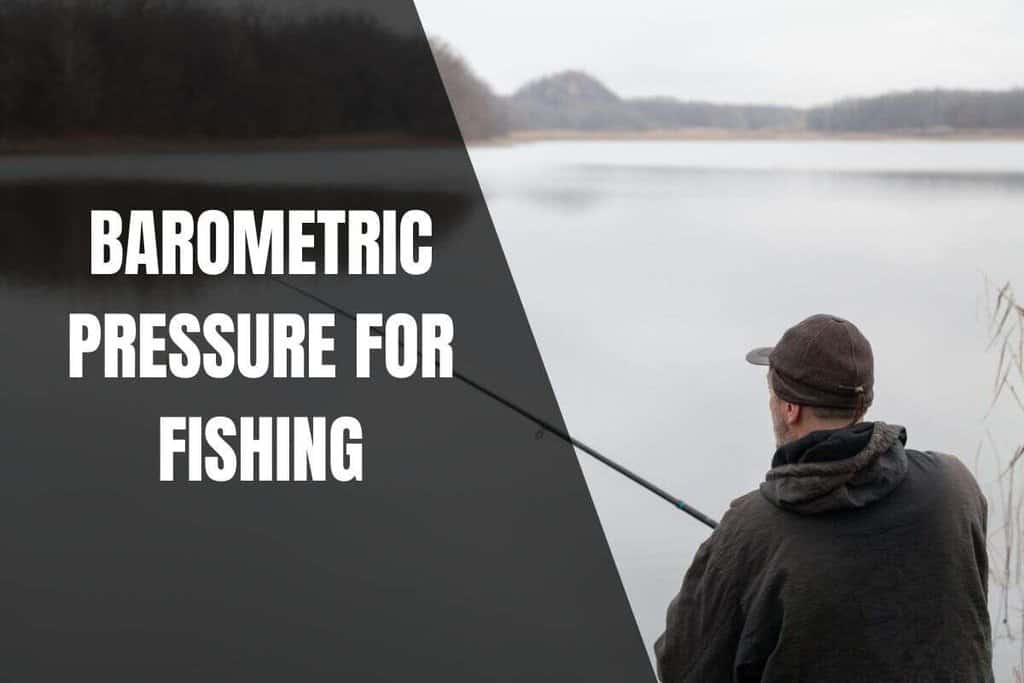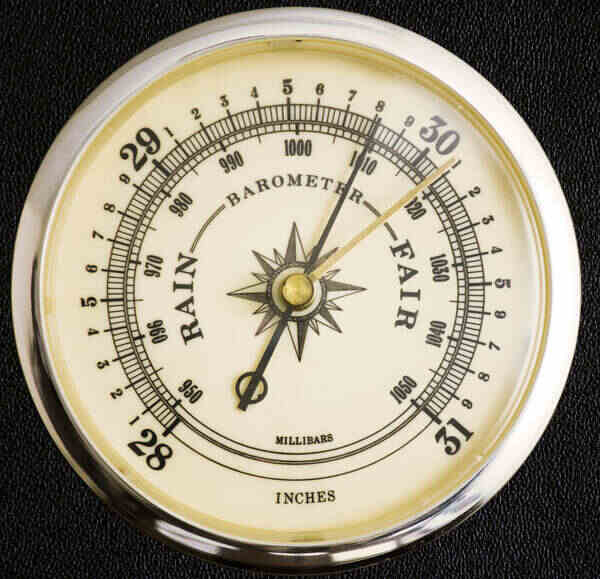You might have heard of anglers arranging their fishing trip around the weather. There are tons of anglers out there convinced that fishing in certain conditions will improve their chances. Is there any truth to this? Or is this idea just washed up?
Weather changes are influenced mainly by changes in air pressure. Meteroicgoists refer to this air pressure as “Barometric Pressure.”
Barometric Pressure measures the atmosphere’s air pressure. Changes in barometric pressure can predict the weather. Normal barometric pressures are between 29.7 – 30.4 inches of mercury. Low pressures (bad weather) are 29.6 inches or lower. High pressures (good weather) are 30.5 inches or higher.
As air pressure changes, the pressure exerted on the water from the air changes. Since fish lives in water, it seems reasonable to believe that changes in air pressure will affect fish.
Eventually, we discovered this conclusion was true, thanks to science. But not all fish are affected the same way by the barometric changes. Some species of fish are not affected at all.
It turns out that some species of fish have an air bladder or swim bladder, which controls a fish’s buoyancy in the water. Fish uses the bladder to keep them at particular depths without needing to swim a lot.
Changes in barometric pressures can cause fish’s air bladder to expand or deflate, forcing fish to be comfortable and active or uncomfortable and slow.
The real question now …, is high or low pressure better for fishing?

Is High or Low Barometric Pressure Better For Fishing?
High-pressure conditions will be better than low-pressure conditions for fishing. However, both of these are technically not the ideal situation.
Barometric pressure changes go through cycles.
- Normal pressure (29.7 – 30.4 inHg): Considered to be fair weather. Fish activity is between fair to good.
- High pressure (30.5 and over inHg): Considered to be clear skies. Fish activity slows down on average compared to normal conditions but is still pretty decent.
- Low pressure (29.6 and lower inHg): Considered to be rainy conditions. Fish activity slows down compared to normal conditions between fair to bad.
- Rising Pressure (Weather Improving): Fish are slightly more active until conditions stabilize.
- Falling Pressure (Weather Worstening): Best fishing conditions as fish are very active trying to feed before the low-pressure front arrives, where fish are slow to move and more uncomfortable.

How Barometric Pressure Can Affect Fishing Conditions
Barometric pressure determines how much pressure is exerted onto the water from the air. This directly affects how fish behaves because the whole ecosystem will change.
Food will not be as easy to come by, and fish have evolved to learn to feed beforehand and conserve energy.
Fish having a swim bladder is hypersensitive to changes in air pressure. They can sense good and bad weather coming a few days before the conditions change.
During low-pressure conditions, a fish’s air bladder needs to inflate to keep the fish at the same depth, which is like having a bloated stomach. To combat some of this feeling, you will find fish in deeper water where they is more pressure from the water column so avoid having the air bladder inflate as much.
The opposite is true with high-pressure conditions. The swim bladder does not have to inflate much, so they tend to stay near the top of the water. Without having a bloated stomach, they are able to move around more freely.
Most fish will have a swim bladder unless they are deep-water or bottom-feeding fish. Cartilaginous fish like sharks do not have swim bladders. Mammal fish like whales and dolphins do have swim bladders as well.
How Much Significantance Do Barometric Changes Have On Fish?
Every fish reacts to changes in barometric pressures differently. However, the change in atmospheric pressure does not hugely impact a fish’s feeding activity.
A 2014 study looking at the effects of barometric pressure on yellow perch found there was a slightly noticeable increase in feeding activity while the barometric pressure was falling. But, the report concluded that the slight increase in activity was not significant.
Fish swim at various depths all the time, and generally, they can swim at different depths that would result in bigger pressure changes in the water than what the barometric pressure can do.
Let’s investigate a change in barometric pressure from a high-pressure system of 31 inHg to a low-pressure system of 28 inHg. This is a three inHg change in air pressure. A fish would have to swim roughly 3.33 ft deeper to experience the same pressure underwater as in the high-pressure system.
A 3.33 ft change is not that big of a change in the grand scheme of things.
What is the best barometric pressure for bass fishing?
A falling barometric pressure declining below 29.7 inHg has been proven to increase bass feeding activity. However, a 2014 study looking at the effects of barometric pressure on yellow perch noted there was a change in activity at different barometric pressures, but it was not considered to be a significant influence.
What is the best barometric pressure for Walleye fishing
A falling barometric pressure declining below 29.7 inHg has been proven to increase walleye feeding activity. However, a 2014 study looking at the effects of barometric pressure on yellow perch noted there was a change in activity at different barometric pressures, but it was not considered to be a significant influence.
What is the best barometric pressure for saltwater fishing
A falling barometric pressure declining below 29.7 inHg has been proven to increase saltwater fish feeding activity. However, a 2014 study looking at the effects of barometric pressure on yellow perch noted there was a change in activity at different barometric pressures, but it was not considered to be a significant influence.
What is the best barometric pressure for trout fishing
A falling barometric pressure declining below 29.7 inHg has been proven to increase trout feeding activity. However, a 2014 study looking at the effects of barometric pressure on yellow perch noted there was a change in activity at different barometric pressures, but it was not considered to be a significant influence.
What is the best barometric pressure for crappie fishing
A falling barometric pressure declining below 29.7 inHg has been proven to increase crappie feeding activity. However, a 2014 study looking at the effects of barometric pressure on yellow perch noted there was a change in activity at different barometric pressures, but it was not considered to be a significant influence.

